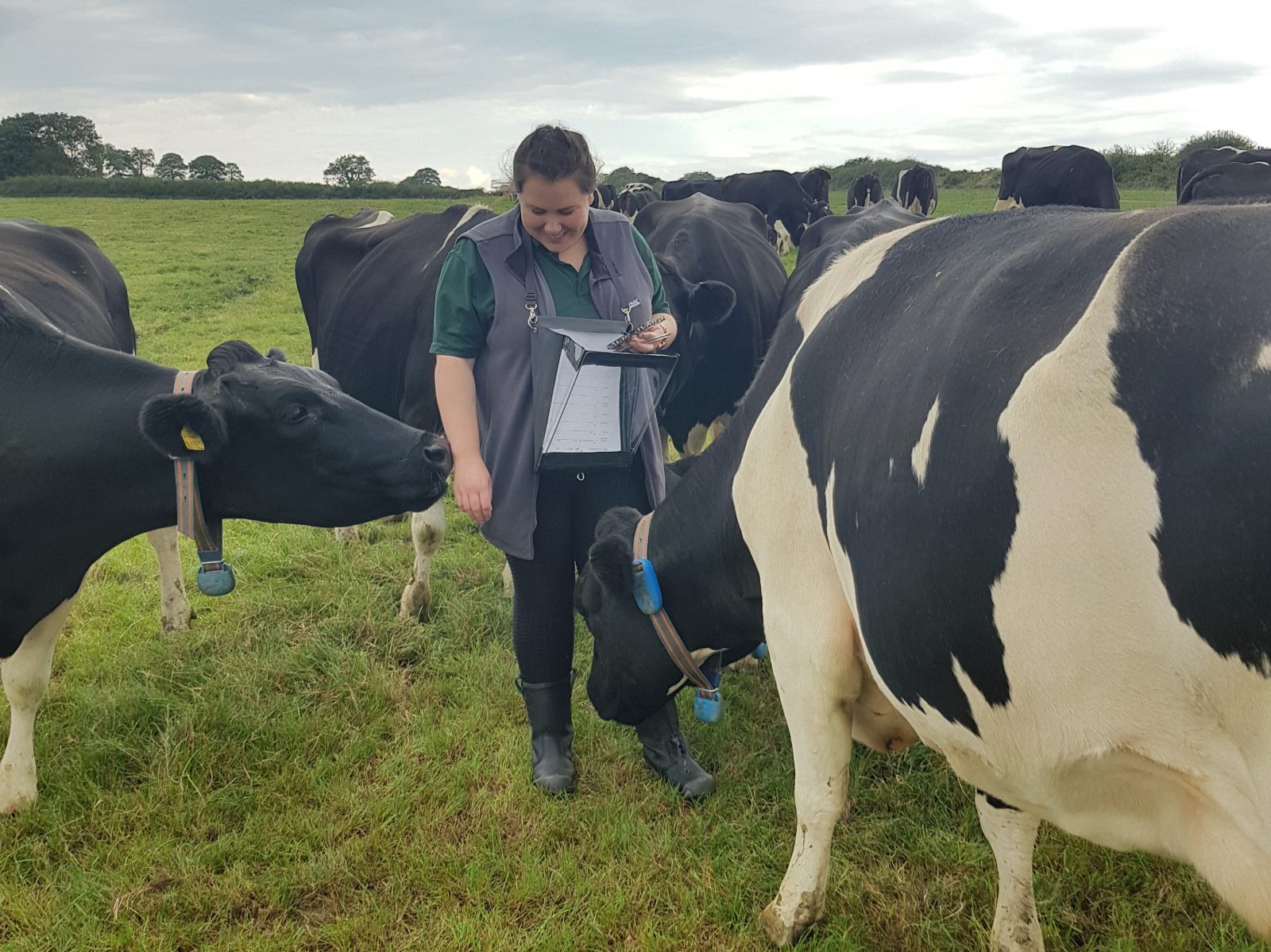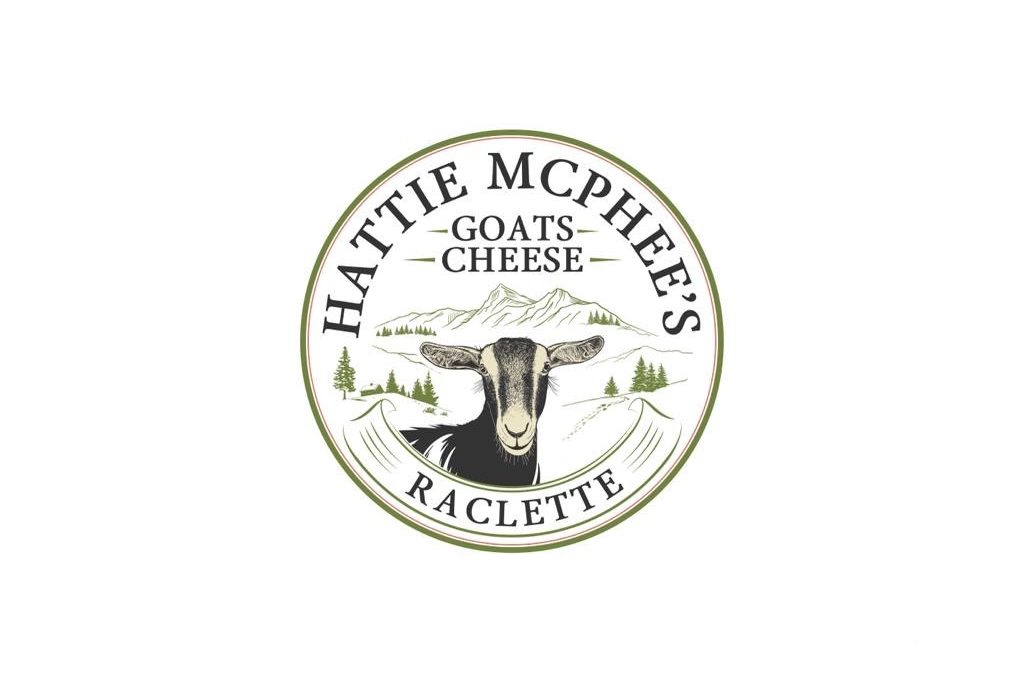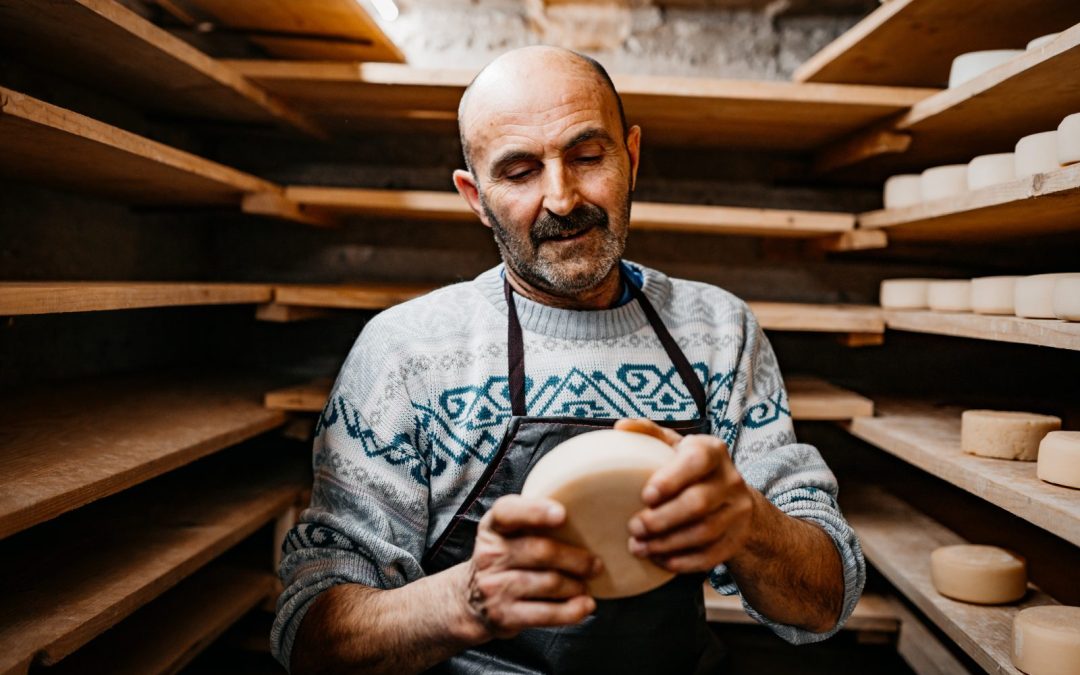The successful Innovate UK-funded feasibility study run by Scotland’s Rural College (SRUC) and the University of Strathclyde using First Milk farms is being amplified through the Strength in Places Digital Dairy Chain project.
Initial results promising
The study investigated the use of existing on-farm animal-mounted sensor technologies, intended for animal management purposes, to deliver verifiable health and welfare, environmental and processing quality benefits for dairy production.
For example, sensor technology intended for oestrus detection was combined with manually recorded behavioural observations to explore what can be understood about positive cow welfare. Using this qualitative behaviour assessment, the study was not just looking at what a cow is doing, but how she is doing it e.g., moving her tail in a relaxed or agitated manner.
Initial results indicate a greater level of ‘herd synchrony’ in cows at pasture, observed in their lying behaviour, in comparison to housed cattle. Herd synchrony is known to be a demonstrable positive welfare trait in cattle. Initial results also suggest there is merit in measuring behaviours with existing on farm sensor technology as a way of exploring positive welfare. To understand how robust these measurements are, the on-going project is being extended through support from the Strength in Places fund.
Expanding study scope
Researchers will be increasing the number of farms in the project, working with additional milk processors alongside First Milk, and including farms with a range of welfare standards and management practices. The use of more and different sensors will also be explored, to help study the behaviour and welfare of cows in different situations, such as:
- Housed/robotic/pasture-based systems
- Set stocked/strip grazed/paddock grazed systems
- Herbal leys/ryegrass/silage
The researchers will also consider environmental aspects which can impact animal welfare, such as:
- Cubicle size/bedding quality/loose-housed system/scraper passage width
- Behaviour and attitude of farm staff
Hear more about the feasibility study and plans for further work from Richard Dewhurst, Head of SRUC’s Dairy Research and Innovation Centre, and Precision Dairying Scientist Holly Ferguson:




